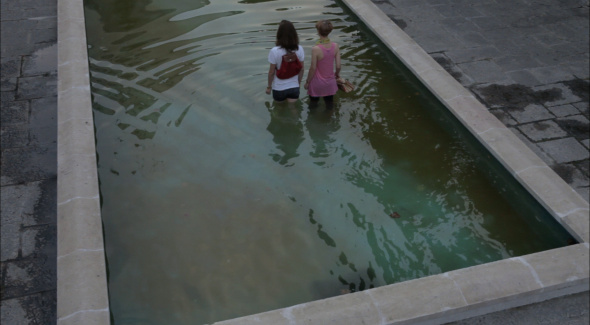João Pedro Rodrigues
Born 1966 in Lisbon, João Pedro Rodrigues is a Portuguese filmmaker and screenwriter. João Pedro Rodrigues recently shot L’ornithologiste, a feature film coproduced by Le Fresnoy - Studio national, which he presents below. Le Fresnoy will also help produce a short film for a retrospective of Rodrigues’s work to he held at the Centre Pompidou in late 2016.
“Saint Anthony is a key figure in Portuguese culture and society. The most famous saint in the world, he is especially prestigious and important in Portugal, where he is the best-known friar minor, or Franciscan. Born Fernando in Lisbon in 1190, his destiny is bound up with travel and navigation. Today, everyone in Portugal knows that, when sailing back from his mission to Morocco, Anthony’s boat went adrift and he was washed up in southern Italy, and that this was the beginning of a legendary journey that took him to Padua, where he died in 1231, and with which he is associated as a saint. Everyone in Portugal knows this, and so do I. There are other things, too, dozens of them, that I am familiar with, without particularly wanting to be, concerning this singular figure. Snatches of everyday stories, images that sometimes connect and sometimes don’t, miracles I have heard about, sometimes distorted, facts, symbols. Like everyone else, I know why he is invoked, on what occasions he is celebrated, and what his name means. I recognise the figure in churches, in art. He is in me.
This “he is in me” is a cold, objective observation. Certainly not a sign of religiosity. As a Portuguese person, Saint Anthony is a figure you live with, negotiate with, for whom you may feel sympathy, aversion or, why not, curiosity. I wanted to find out how this Saint Anthony was part of me. What body could I reconstitute with the fragments picked up here and there, from scattered pieces-since, after all, there were several elements that attracted me. What monster, lifelike or otherwise, would take shape? I first decided to do this work without research or documentation, without aiming for exactitude. Using only the pieces of my incomplete puzzle. I knew that Saint Anthony had the ability to immediately understand all languages, that he had brought a young man back to life with his magic breath, that he had held the infant Jesus in his arms, and that he wanted to keep that embrace secret. I knew of his fascination with nature and animals, the fact that he abandoned his title and wealth and kept only the essential, but that he had kept his knowledge and erudition. I knew that he had been taken in by the Franciscans after his shipwreck in the South of Italy, and of course I knew of the legend of the boat cast adrift. It is, indeed, this last image, this lost boat, this boat that alone decided the course of its passenger’s life, that gave me the starting point for my story.
Getting lost. Being lost. Not knowing either where to go, or if I would get somewhere. In the end, though, I read, learned and examined the life of saint Anthony. I had already evoked the myth and the popular beliefs surrounding its commemoration in Matin de la Saint-Antoine, a short film I made in 2012, coproduced by Le Fresnoy. The more I knew about him, the more mysterious and fascinating he seemed. I therefore wanted both to have fun, to rehabilitate certain beauties and to scuff his glossy image. He was effectively made into a symbol of the family and of marriage during the Salazar dictatorship and this image, patched together with whatever came to hand, seems impossible to shake off This film is therefore a transgressive and deliberately blasphemous appropriation of the saint’s life. While some passages of the homily spoken in 1222 are repeated here, as are certain episodes of his life, if this was constantly on my mind, the imaginary part gained ground in the process of writing. It is a spirit, a trajectory that it imparts to the film, and that leads Fernando to his new identity.”
João Pedro Rodrigues.





